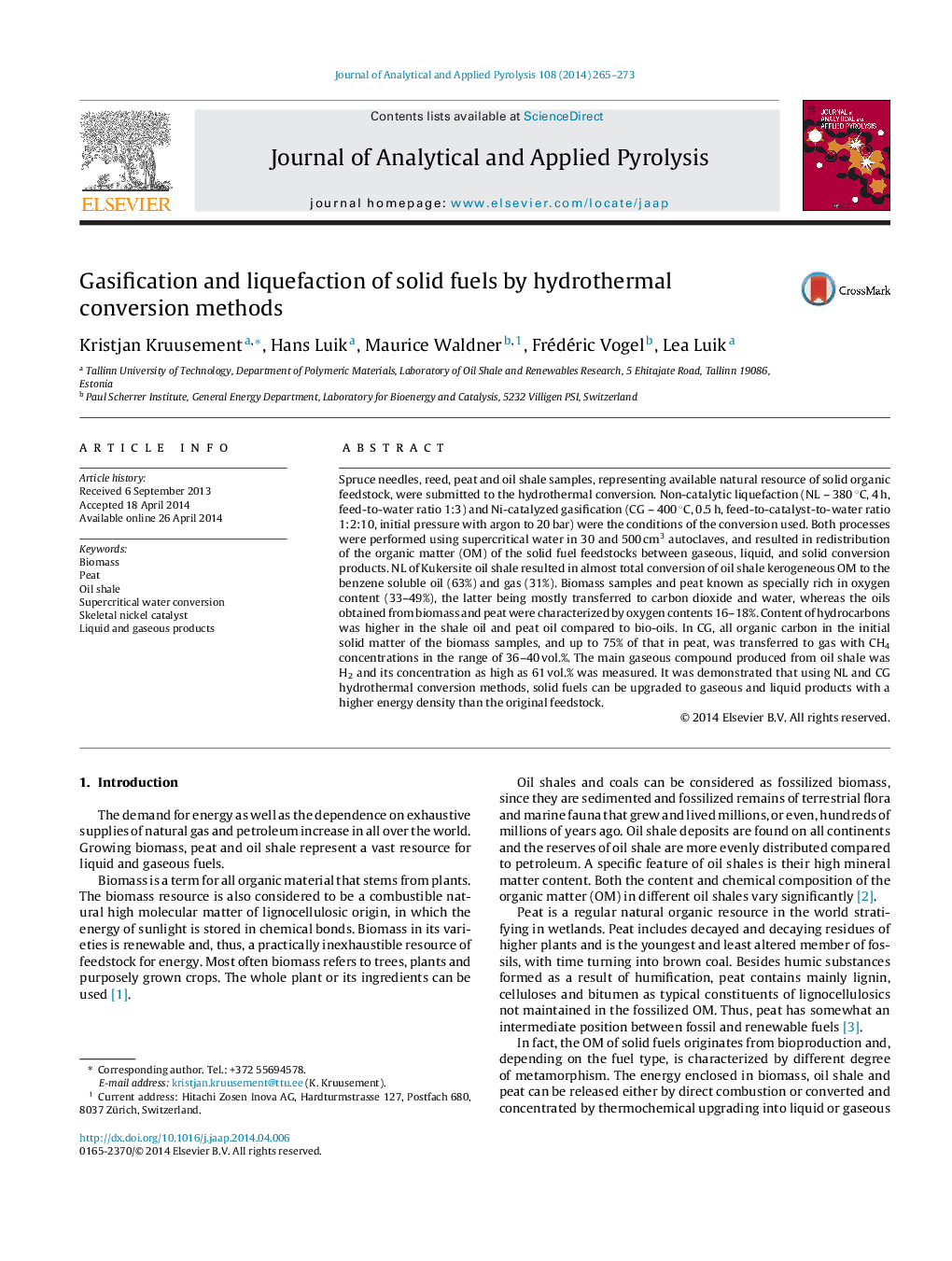| Article ID | Journal | Published Year | Pages | File Type |
|---|---|---|---|---|
| 1196684 | Journal of Analytical and Applied Pyrolysis | 2014 | 9 Pages |
•We submit various fuels to liquefaction and gasification with supercritical water.•We compare the yield and composition of the products obtained in process.•Conversion of the fuels gives higher calorific liquid compounds than the initial fuel.•Conversion products yield and their composition can be affected with a catalyst.•The use of Skeletal Nickel gives more CH4 and H2, and less CO2, except from Kukersite.
Spruce needles, reed, peat and oil shale samples, representing available natural resource of solid organic feedstock, were submitted to the hydrothermal conversion. Non-catalytic liquefaction (NL – 380 °C, 4 h, feed-to-water ratio 1:3) and Ni-catalyzed gasification (CG – 400 °C, 0.5 h, feed-to-catalyst-to-water ratio 1:2:10, initial pressure with argon to 20 bar) were the conditions of the conversion used. Both processes were performed using supercritical water in 30 and 500 cm3 autoclaves, and resulted in redistribution of the organic matter (OM) of the solid fuel feedstocks between gaseous, liquid, and solid conversion products. NL of Kukersite oil shale resulted in almost total conversion of oil shale kerogeneous OM to the benzene soluble oil (63%) and gas (31%). Biomass samples and peat known as specially rich in oxygen content (33–49%), the latter being mostly transferred to carbon dioxide and water, whereas the oils obtained from biomass and peat were characterized by oxygen contents 16–18%. Content of hydrocarbons was higher in the shale oil and peat oil compared to bio-oils. In CG, all organic carbon in the initial solid matter of the biomass samples, and up to 75% of that in peat, was transferred to gas with CH4 concentrations in the range of 36–40 vol.%. The main gaseous compound produced from oil shale was H2 and its concentration as high as 61 vol.% was measured. It was demonstrated that using NL and CG hydrothermal conversion methods, solid fuels can be upgraded to gaseous and liquid products with a higher energy density than the original feedstock.
